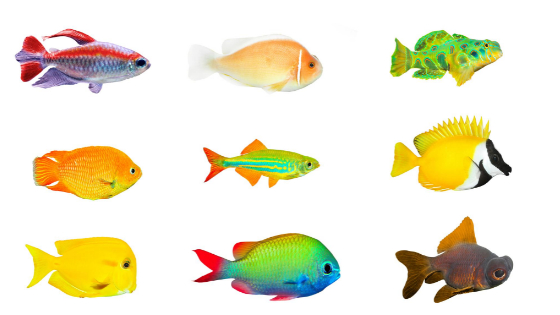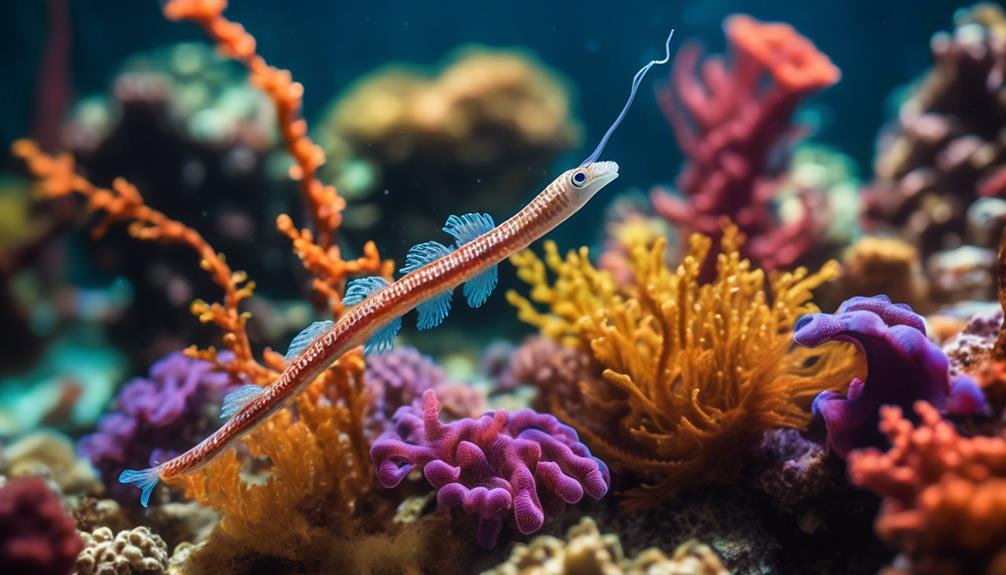
Looking to enhance your aquarium with a captivating and unique creature? Look no further than the curious and colorful pipefish!
These fascinating saltwater fish, closely related to seahorses, are a true delight to behold. With their long, sleek bodies and pipe-like mouths, pipefishes bring an element of curiosity and wonder to any underwater display.
But there’s more to these mesmerizing creatures than meets the eye. Their vibrant colors and intriguing behaviors make them a captivating addition to your aquarium.
So, if you’re ready to discover the enchanting world of pipefishes, keep reading to uncover their secrets and find out why they are a must-have for any aquatic enthusiast.
Key Takeaways
- Pipefish are a curious species of saltwater fish closely related to seahorses.
- They have a long, straight, snake-like body and a pipe-like mouth.
- Pipefish prefer slow water currents and are best housed in aquariums with generous amounts of rock and coral for hiding.
- They are hardy and can thrive in various aquarium conditions, making them a fascinating addition to any aquarium.
Size and Group: Medium-Sized Saltwater Fish
Medium-sized saltwater fish, such as pipefish, are a fascinating addition to any aquarium. These curious creatures belong to the group of saltwater fish and are closely related to seahorses. With their long, straight, snake-like bodies and pipe-like mouths, pipefishes are a unique sight to behold. They prefer to drift with the currents, using their dorsal fin for locomotion.
Despite their fragile appearance, pipefishes are surprisingly hardy and can thrive in a wide range of aquarium conditions. They originate from the tropical, sub-tropical, and temperate regions of most of the world’s oceans. In terms of size, pipefishes fall into the medium-sized category, making them suitable for aquariums of various sizes.
Temperament: Non-Aggressive and Peaceful
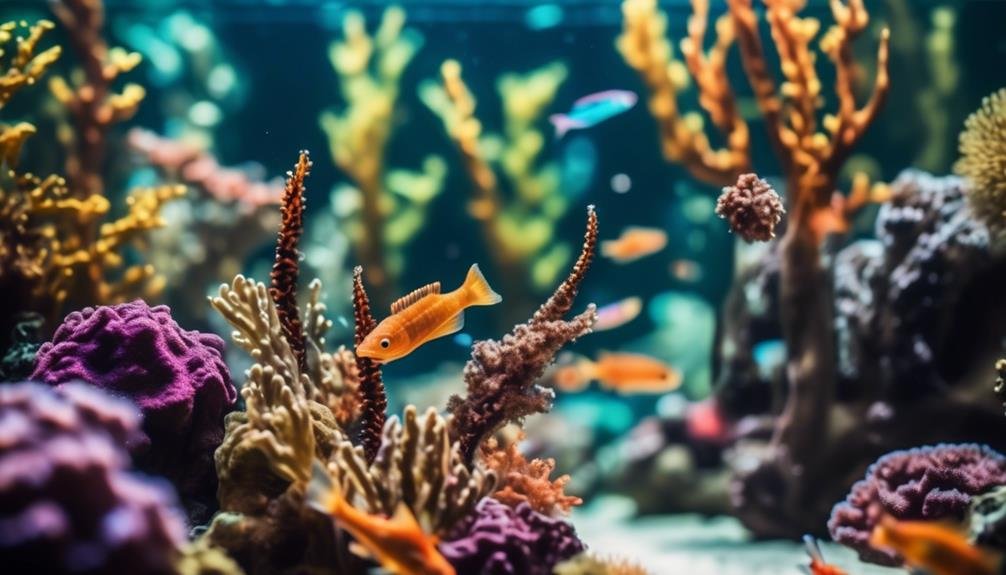
If you’re looking for an aquarium fish that adds a touch of tranquility and harmony to your underwater world, look no further than the pipefish, known for its non-aggressive and peaceful temperament.
Here are some key characteristics that make pipefish a great addition to your aquarium:
- They’re non-aggressive: Pipefishes are known for their peaceful nature and rarely show aggression towards other tank mates.
- They’re calm swimmers: These fish have weak swimming abilities and prefer slow water currents, making them a perfect choice for aquariums with gentle flow.
- They can be kept in groups: Pipefishes can be kept in large groups and may even form a pipefish train by grabbing onto each other’s tails, creating a stunning and fascinating display.
- They coexist well with other species: Pipefishes can coexist peacefully with seahorses and other pipefish species, making them excellent tank mates for a variety of marine setups.
With their non-aggressive and peaceful temperament, pipefishes can bring a sense of serenity and tranquility to your aquarium.
Ideal Aquarium Size: Large Tank of at Least 50 Gallons
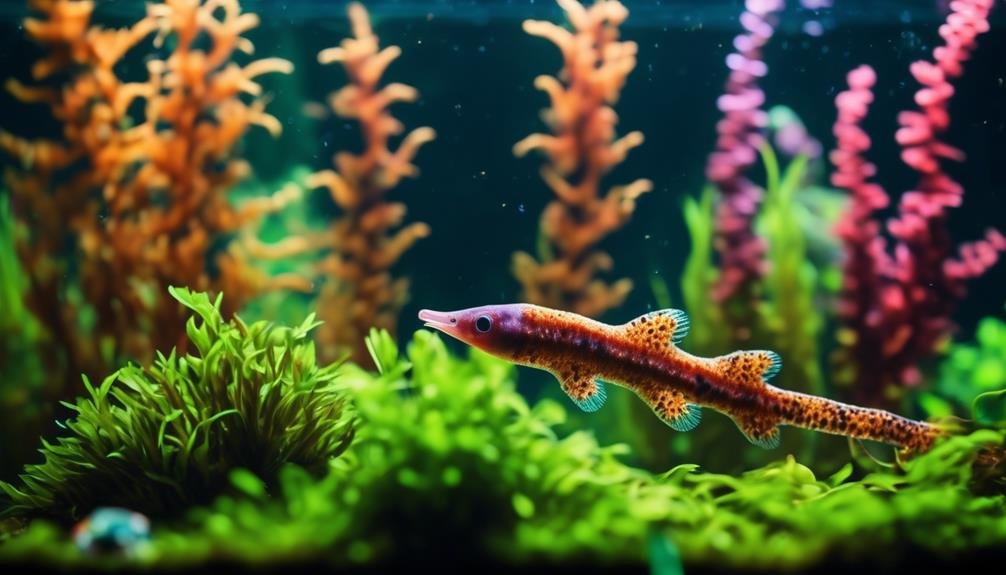
A large tank of at least 50 gallons is the ideal size for housing pipefish in your aquarium. Due to their long, snake-like bodies, pipefish require a spacious environment to swim freely and comfortably. A larger tank also allows for the addition of rocks and coral work, providing ample hiding spots for these curious creatures.
It’s recommended to keep pipefish in a species tank or with seahorses to avoid competition for food with faster tank mates. Additionally, pipefish can be kept in large groups and may even form a fascinating pipefish train by grabbing onto each other’s tails.
Providing a tank of sufficient size ensures that your pipefish thrive and display their vibrant colors and unique behaviors.
Preferred Swimming Region: Middle of the Tank
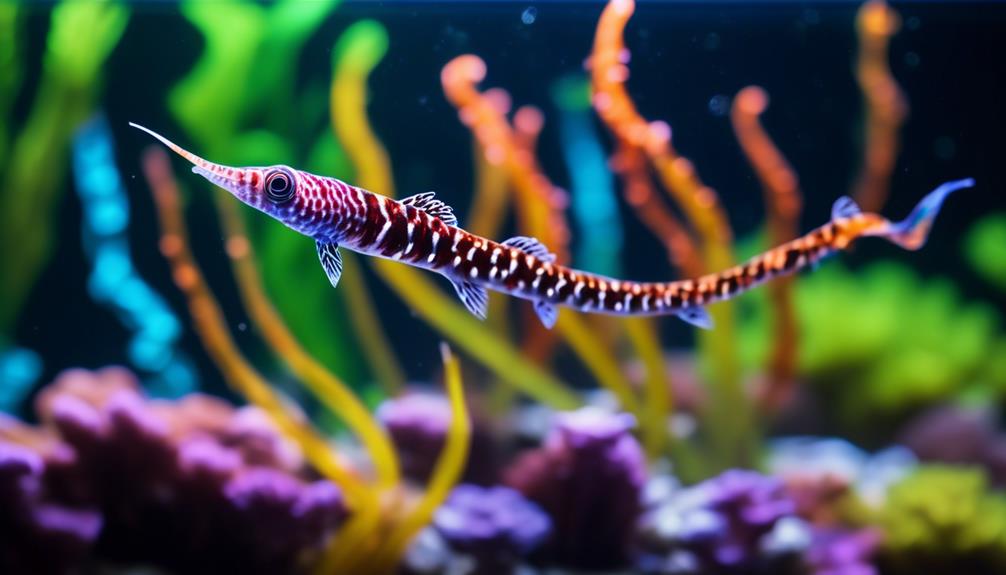
Pipefish prefer to swim in the middle region of the tank, utilizing their unique body shape to gracefully navigate through the water. This is because they’ve weak swimming abilities and prefer slow water currents. Swimming in the middle of the tank allows them to stay away from the strong currents near the surface and the bottom, where they might struggle to maintain their position.
Additionally, swimming in the middle region allows them to easily access their preferred food sources, such as brine shrimp, ghost shrimp, copepods, and amphipods found in live rock. By staying in the middle, pipefish can efficiently search for food and interact with other tank mates, such as seahorses, with which they often form close bonds.
General Description: Long, Snake-Like Body With a Pipe-Like Mouth
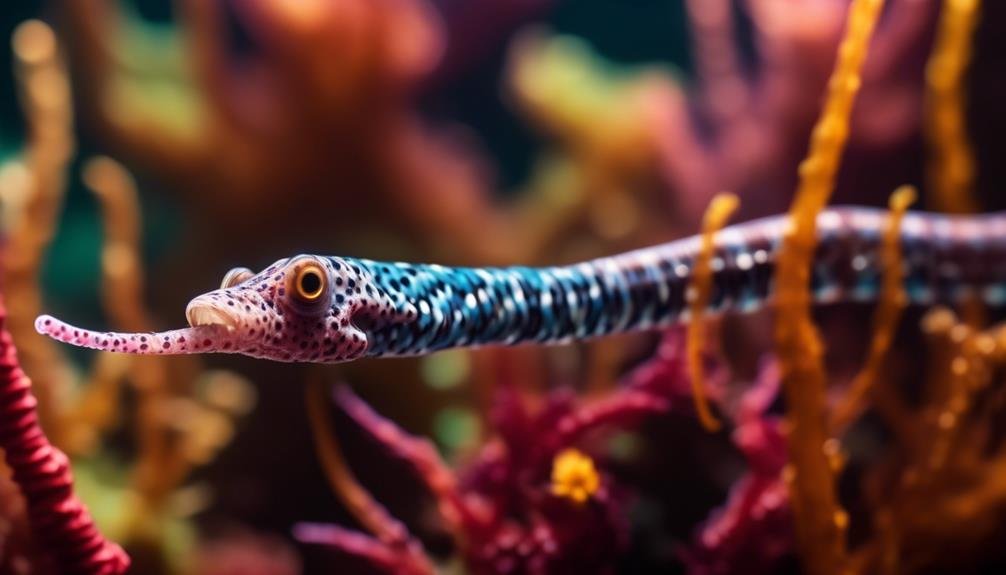
With its elongated, serpentine body and a mouth resembling a slender tube, the pipefish possesses a unique and fascinating physical appearance. This slender-bodied fish, closely related to seahorses, has captured the attention of aquarium enthusiasts around the world. Take a closer look at the table below to learn more about the intriguing characteristics of the pipefish:
| Feature | Description |
|---|---|
| Size | Medium |
| Group | Saltwater |
| Temperament | Non-aggressive |
| Aquarium Size | Large (50 gal) |
| Swimming Region | Middle |
| General Description | Long, straight, snake-like body with a pipe-like mouth |
| Origins | Tropical, sub-tropical, and temperate regions of most of the world’s oceans |
| Color | Brightly colored, including shades of red, orange, purple, green, brown, and black |
The pipefish’s long, snake-like body allows it to blend in with seaweed and other marine plants, providing excellent camouflage. Its pipe-like mouth is perfectly adapted for sucking in tiny crustaceans and other small organisms. This specialized feeding technique sets the pipefish apart from other fish species, making it a captivating addition to any aquarium.
Origins: Found in Tropical, Sub-Tropical, and Temperate Oceans
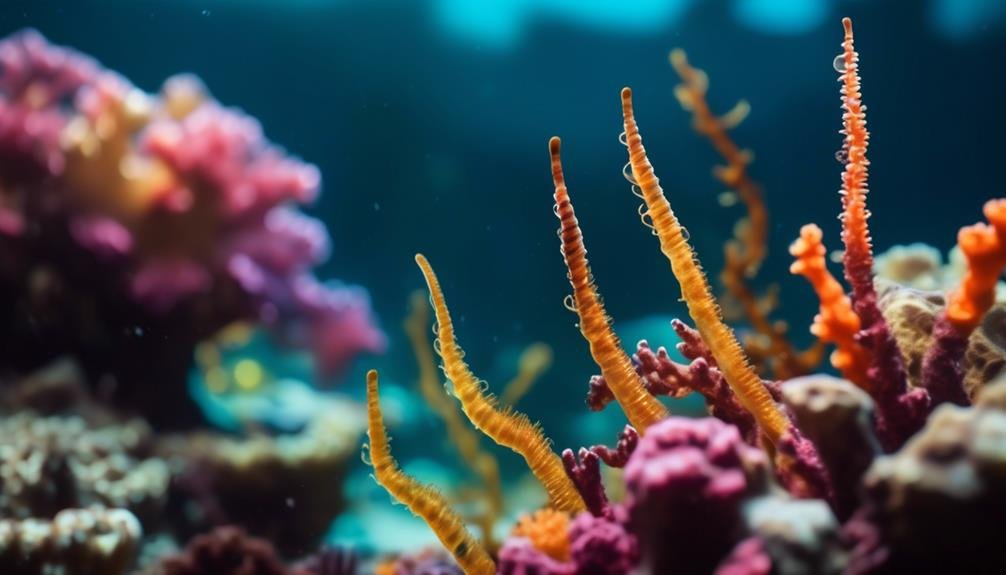
As we explore the origins of the pipefish, we find that these fascinating creatures are naturally found in tropical, sub-tropical, and temperate oceans. They’re widely distributed across the world’s oceans, inhabiting a variety of marine environments.
Here are some key points about the origins of pipefish:
- Wide Distribution: Pipefish can be found in oceans around the globe, from the tropical waters of the Caribbean Sea and the Indo-Pacific region to the sub-tropical regions of the Atlantic Ocean and the Mediterranean Sea.
- Temperature Range: They’re adaptable to different water temperatures, ranging from the warm tropical waters to the cooler temperate zones.
- Habitat Preferences: Pipefishes can be found in a variety of habitats, including coral reefs, seagrass beds, rocky shores, and estuaries. They often seek shelter and camouflage among vegetation and other structures.
- Global Diversity: With their wide distribution, pipefishes exhibit a rich diversity of species, each with its own unique adaptations and characteristics.
Vibrant Colors: Beautiful Shades of Red, Orange, Purple, Green, Brown, and Black
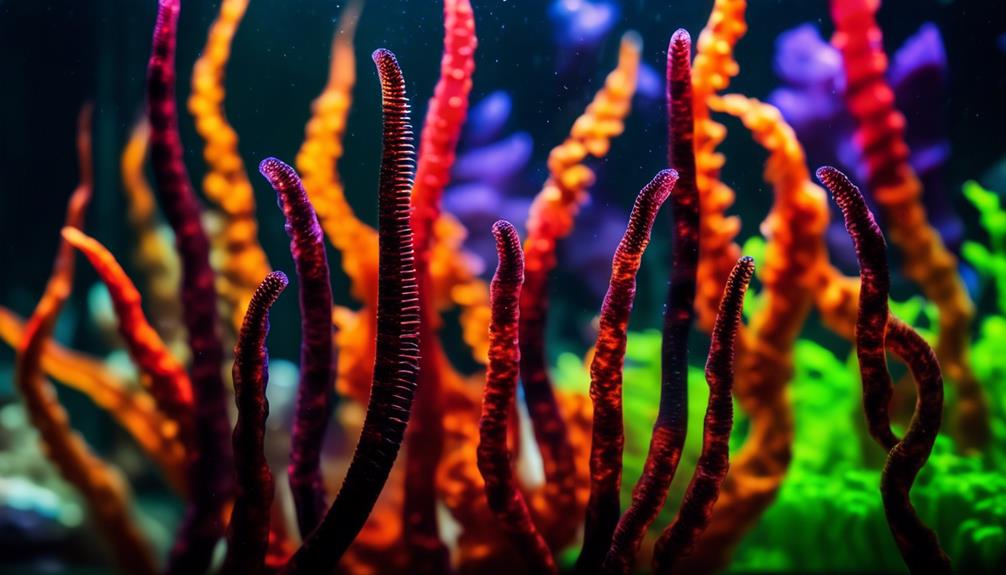
The vibrant colors of pipefishes encompass a stunning range, including shades of red, orange, purple, green, brown, and black.
These colorful pipefishes can add a beautiful touch to your aquarium, creating a visually captivating underwater display.
Whether you prefer the fiery hues of red and orange, the regal tones of purple, or the earthy shades of green and brown, there’s a pipefish coloration to suit every taste.
Additionally, the striking contrast of black pipefishes can bring a sense of elegance and sophistication to your aquarium.
With their vibrant colors, pipefishes are sure to become the focal point of your tank, creating a mesmerizing and enchanting underwater world.
Suitable Tank Mates: Seahorses and Other Pipefish Species
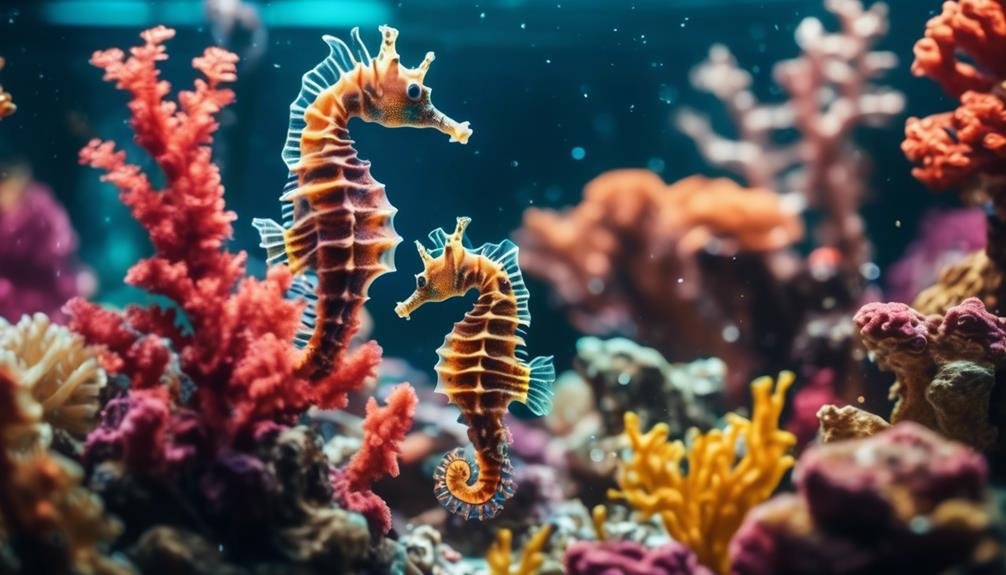
To ensure a harmonious and captivating display in your aquarium, consider selecting suitable tank mates for your colorful pipefish, such as seahorses and other pipefish species. Adding these companions won’t only enhance the visual appeal of your tank but also create a fascinating dynamic among the inhabitants.
Here are some excellent options to consider:
- Seahorses: These elegant creatures share similar characteristics with pipefish and will coexist peacefully in the same tank.
- Banded Pipefishes: These pipefishes have striking bands of color, making them a visually appealing addition to your aquarium.
- Bluestripe Pipefishes: With their vibrant blue stripes, these pipefishes will add a pop of color to your tank.
- Dragonface Pipefishes: Known for their unique snout-like appearance, these pipefishes will bring a touch of intrigue to your underwater world.
Care Difficulty: Requires Daily Attention and Maintenance
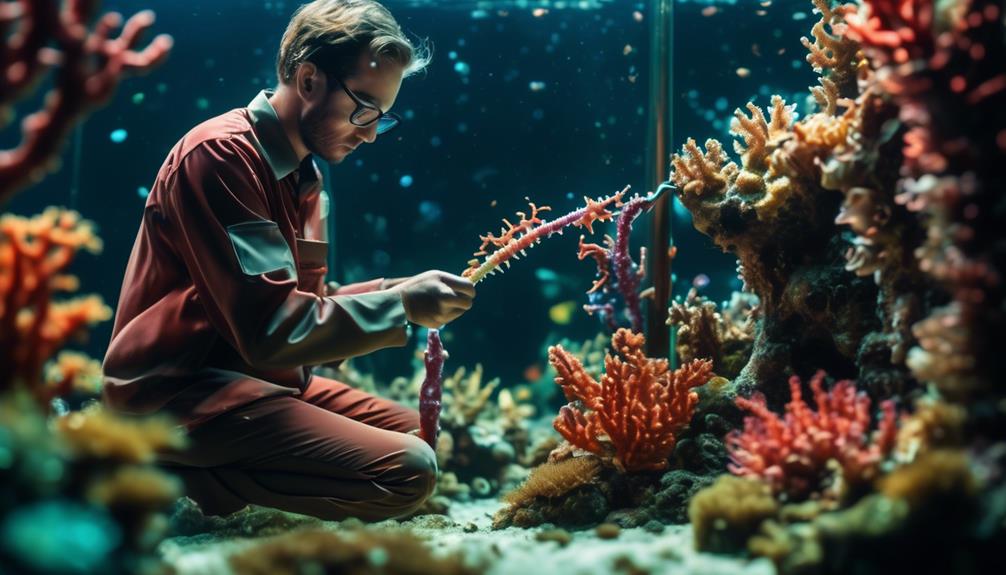
Caring for pipefish in your aquarium requires daily attention and maintenance to ensure their well-being and thriving environment. These fascinating creatures may be hardy, but they still need regular care to stay healthy.
You must pay close attention to the water conditions in the tank, as pipefish prefer slow water currents. It’s crucial to maintain a large aquarium with plenty of rock and coral work for hiding.
Due to their weak swimming abilities, pipefish should be kept in a species tank or with seahorses to avoid competition for food. Additionally, feeding them a diet of brine shrimp, ghost shrimp, copepods, and amphipods found in live rock is essential for their nutrition.
Housing Requirements: Slow Water Currents and Ample Hiding Places
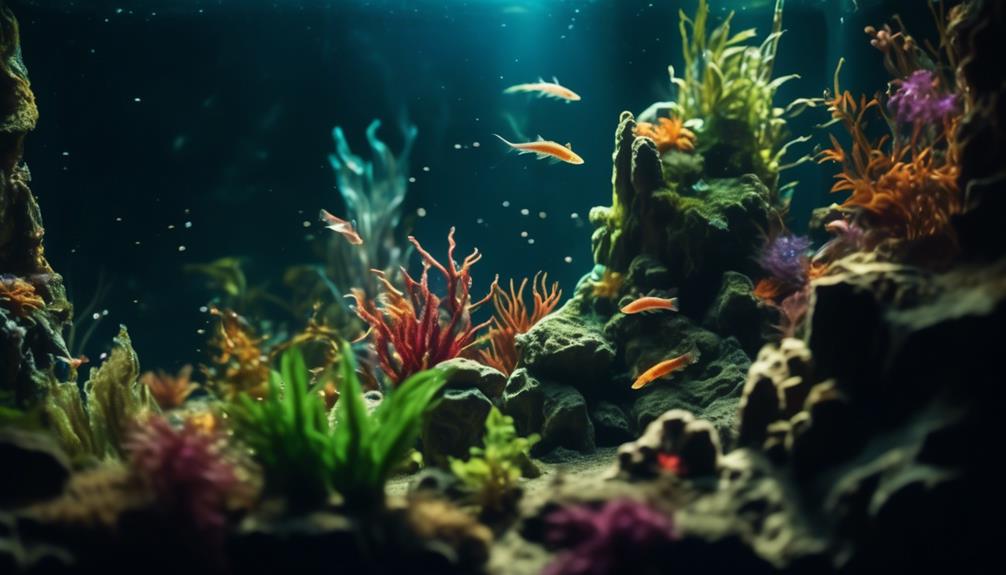
To provide the best housing for your pipefish in your aquarium, it’s important to create an environment with slow water currents and ample hiding places.
Pipefish are delicate creatures that thrive in calm waters, so it’s crucial to ensure that the water flow in your tank is gentle. This can be achieved by using a low-flow filtration system and positioning any powerheads or pumps strategically to minimize water movement.
Additionally, pipefish love to have hiding spots to feel secure. You can create hiding places by adding live rock, coral work, or artificial structures with nooks and crannies for them to explore and seek shelter.
These hiding places not only provide a sense of security for your pipefish but also encourage natural behaviors and make your aquarium more visually appealing.
Habitat Preferences: Appreciates Rock and Coral Structures for Hiding
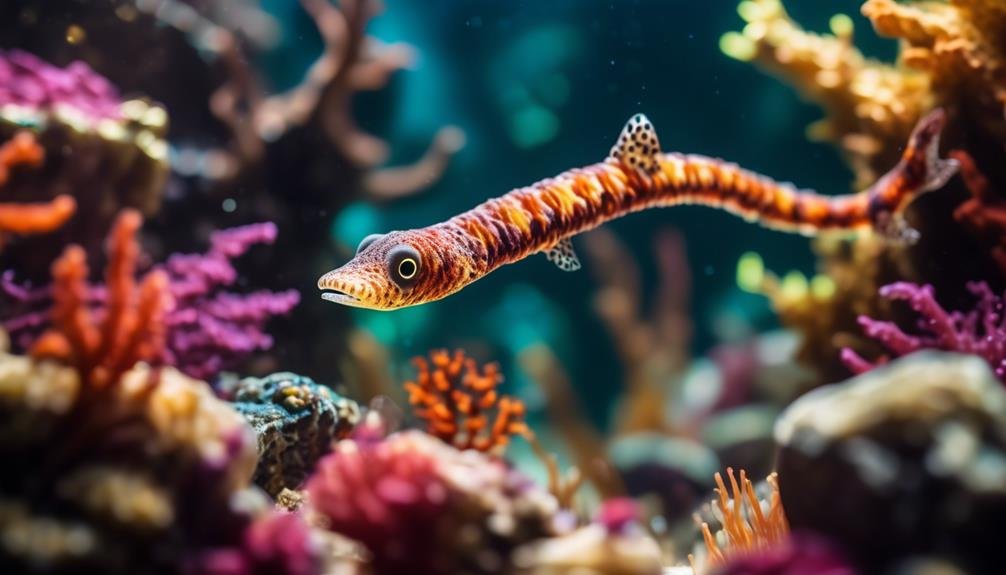
Did you know that pipefish appreciate the presence of rock and coral structures in their habitat for hiding? These fascinating creatures, closely related to seahorses, rely on these structures to feel secure and protected.
Rock and coral formations provide them with natural hiding places where they can retreat when they feel threatened or stressed. Pipefish use their long, snake-like bodies to weave through the crevices and gaps in these structures, blending in with their surroundings and avoiding potential predators.
Having ample hiding places in the aquarium is crucial to ensuring the well-being and happiness of pipefish. So, when setting up their habitat, be sure to incorporate plenty of rock and coral structures, creating a safe and comfortable environment for these curious and colorful creatures.
Tankmates Considerations: Best Kept in a Species Tank or With Seahorses
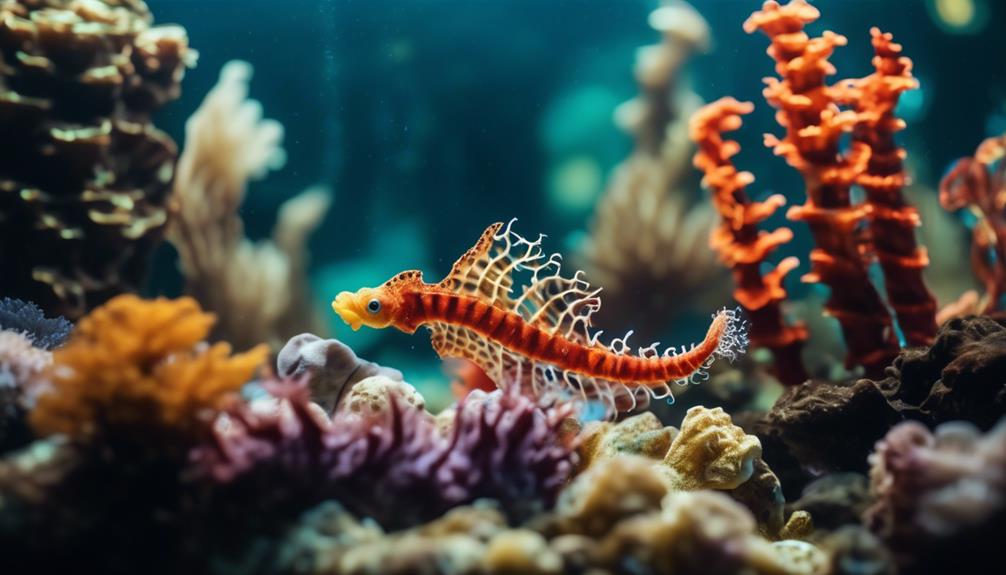
When considering tankmates for pipefish, it’s best to keep them in a species tank or with seahorses. Pipefish have unique feeding behaviors and prefer slow water currents, which can make it challenging for them to compete for food with faster tank mates. Keeping them in a species tank or with seahorses ensures that they’ve a suitable environment with compatible companions.
Here are some key considerations for tankmates:
- Seahorses: Pipefish and seahorses are closely related and have similar care requirements, making them ideal tankmates. They can peacefully coexist and even form a symbiotic relationship, with seahorses hitching rides on the pipefish’s tails.
- Other Pipefish: Keeping pipefish with other pipefish of the same species or different species can create a visually stunning aquarium. Pipefish can form large groups and even create a mesmerizing pipefish train by grabbing onto each other’s tails.
- Non-Aggressive Fish: If you decide to keep pipefish with other fish species, choose non-aggressive species that won’t compete for food or harass the pipefish. It’s important to carefully research the temperament and feeding habits of potential tankmates to ensure compatibility.
- Avoid Fast Swimmers: Pipefish have weak swimming abilities and prefer slow water currents. Avoid keeping them with fast-swimming fish that may outcompete them for food or create stressful conditions.
Feeding Habits and Breeding: Diet Includes Brine Shrimp, Copepods, and Amphipods; Unique Breeding Behavior
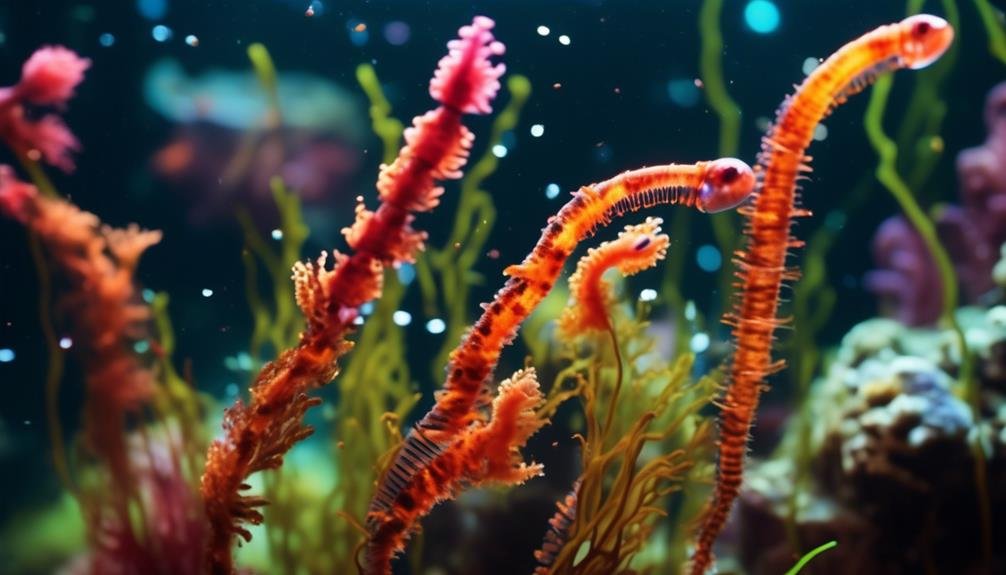
Feeding Habits and Breeding: Pipefish have a diverse diet consisting of brine shrimp, copepods, and amphipods, while their unique breeding behavior involves the female depositing eggs in a small pouch on the male’s chest.
| Feeding Habits | Breeding |
|---|---|
| Diet: | – Brine shrimp<br>- Copepods<br>- Amphipods |
| Behavior: | – Female deposits eggs in male’s pouch<br>- Male fertilizes and carries eggs |
| Benefits: | – Varied diet ensures nutritional balance<br>- Male’s pouch provides safe environment for eggs |
Pipefish are known for their interesting feeding habits and breeding behavior. They have a diverse diet that includes brine shrimp, copepods, and amphipods. These small prey items provide them with the necessary nutrients to thrive in the aquarium. Additionally, pipefish have a unique breeding behavior where the female deposits her eggs in a small pouch on the male’s chest. The male then fertilizes and carries the eggs until they hatch. This behavior ensures the safety and well-being of the eggs, as the male provides protection and a suitable environment for their development. The table above summarizes the feeding habits and breeding behavior of pipefish, highlighting the importance of a varied diet and the role of the male in the breeding process.
Frequently Asked Questions
Can Pipefish Be Kept in a Tank With Other Fast-Swimming Fish?
Yes, pipefish can be kept in a tank with other fast-swimming fish, but it’s recommended to keep them in a species tank or with seahorses to avoid competition for food.
Are Pipefish Suitable for Beginners or Do They Require Experienced Care?
Pipefish are suitable for beginners with daily care requirements. They can thrive in a variety of aquarium conditions and are hardy despite their fragile appearance. They make a fascinating addition to your aquarium.
Do Pipefish Require Any Special Water Conditions in the Aquarium?
Pipefish require slow water currents in the aquarium. They appreciate generous amounts of rock and coral for hiding. It is recommended to keep them in a species tank or with seahorses due to competition for food with faster tank mates.
How Often Should Pipefish Be Fed and What Is Their Preferred Diet?
Pipefish should be fed daily with a diet consisting of brine shrimp, ghost shrimp, copepods, and amphipods found in live rock. They prefer smaller, live food sources for optimal nutrition.
Can Pipefish Be Bred in Captivity and if So, What Is the Process?
Yes, pipefish can be bred in captivity. The female deposits eggs in the male’s pouch, where they are fertilized and carried until hatching. It’s a fascinating process that allows you to witness the life cycle of these curious and colorful creatures in your own aquarium.
Are Boxfish and Pipefish Compatible in the Same Aquarium?
Yes, boxfish and pipefish can coexist in the same aquarium. Both species are peaceful and won’t typically bother each other. However, it’s important to provide ample hiding spots and be mindful of the size of the tank. Adding a colorful boxfish for the aquarium can add an interesting visual element.
Conclusion
In conclusion, adding the curious and colorful pipefish to your aquarium is a fantastic choice. With their captivating appearance and interesting behaviors, they’re sure to become a focal point in your tank.
These hardy creatures can thrive in a variety of conditions and make great tankmates for seahorses. Their unique breeding behavior and variety of vibrant colors make them a truly fascinating addition to any aquarium setup.
Don’t miss out on the opportunity to have these mesmerizing creatures in your own tank!




